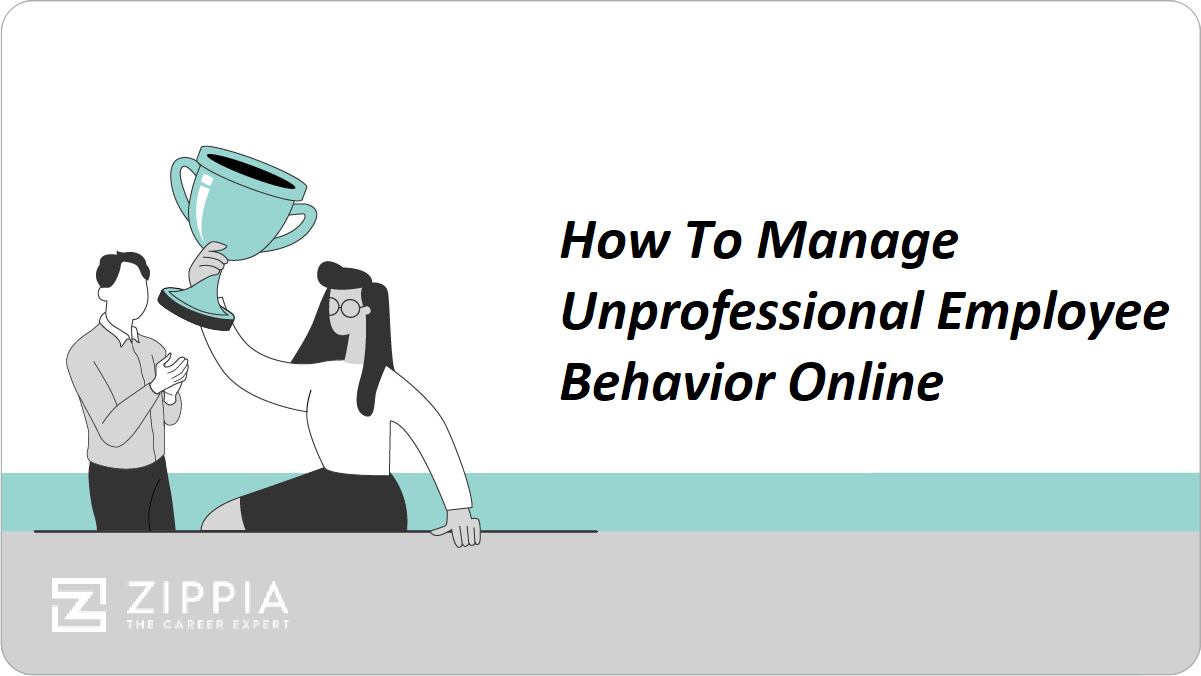Summary. A hostile work environment is any workplace that makes an employee dread coming in. Of course, it isn’t that simple – it has to be created by the behavior of the other workers or supervisors. And even in that case, it only becomes one if the behavior is pervasive and consistent.
If your business shows any signs of moving towards a hostile work environment, it’s in everyone’s best interests to stop it. Not only does it make your employees miserable, but it can also stifle work performance and even open you up to liability in civil court.
Key Takeaways:
-
The term hostile work environment is derived from civil law, and there aren’t any federal laws that define what one is. Instead, there are anti-discrimination laws.
-
In order to prove in civil court that it’s a hostile work environment, the behavior will need to be shown as pervasive and long-term.
-
If a supervisor, owner, or another person in a position of power is involved in harassment or discrimination, then it’s considered that the employer has liability. The only exception is if the employer can prove that they made a reasonable effort to remedy the situation.
What Is a Hostile Work Environment?
The term hostile work environment comes from civil law, though it can sometimes be called an offensive work environment or an abusive work environment.
For a workplace to be considered to have a hostile work environment, there has to be unwelcome or offensive behavior that causes an employee (or more than one employee) to be uncomfortable, intimidated, or fearful.
Harassment of various kinds is typically what causes a hostile work environment. There are many different types of discriminatory behavior, and the Equal Employment Exchange Commission covers all the ones that are prohibited by law. It is illegal to discriminate against someone in the workplace on the basis of the following:
-
Age. The most common age discrimination is against older workers. The Age Discrimination Employment Act protects against discrimination against those who are 40 years of age or older. Discrimination can still occur if both parties are over 40.
-
Disability. Reasonable accommodations are required to be made for disabled workers, and any sort of harassment or discrimination is also prohibited.
-
Genetic information. While this sounds peculiar and a bit dystopian, it largely covers not being able to discriminate against someone due to their health conditions. Genetic information often contains risk factors for diseases – and some even have genetic diseases – meaning that discrimination based on this is prohibited.
In the majority of cases, it is also illegal for employers to request or acquire genetic information. There are narrow exceptions to the rule, such as overhearing a conversation, running across it in a newspaper, getting a family medical history for family leave, or for monitoring employees’ health if they work with toxic substances.
-
National origin. Any discrimination based on where a person comes from is prohibited. This applies to those who are from somewhere other than the United States, have an accent, or even if they just look to have a particular ethnic background.
It also extends to those who are associated with such persons. For instance, if they have a spouse, child, relative, or even friend who is of a different ethnic origin (or appears to be), discrimination or harassment towards them is illegal.
-
Pregnancy. A person can’t be harassed, fired, or passed over for a promotion because they are pregnant or plan to become pregnant. It extends to more than just a current pregnancy as well. Under Title VII, pregnancy discrimination can include:
-
A current pregnancy. Not only is it illegal to treat a person differently because they become pregnant, but the Americans with Disabilities Act can also come into play. Pregnancy can cause issues that legally count as disabilities, so reasonable accommodations are required to be made.
-
A past pregnancy. Any past pregnancy would likely also fall under medical information, which is inherently private. That means that whatever came of the pregnancy, whether or not they’re a parent, lost the child, or had an abortion, it’s against the law to have that alter pay, promotions, training, or hiring.
-
A potential pregnancy. Some employers are leery of hiring women of childbearing age due to the fact that it’s likely they’ll have to give maternity leave. This is a discriminatory practice, and if a pattern becomes apparent, it could even have legal consequences.
-
A medical condition related to childbirth or pregnancy, including lactation. Failing to allow someone who is breastfeeding to pump would be considered a violation of this rule.
-
Abortion. Whether or not the person chooses to have an abortion, harassment, discrimination, or prejudice towards them for their choice could lead to a hostile work environment.
-
Contraceptives. Many employer health plans cover birth control. Persistent bringing up contraceptives and birth control or judgment towards a person who either uses or doesn’t use them could end up creating a hostile work environment.
-
-
Race or color. A person’s race or the color of their skin can end up leading to harassment or discrimination.
-
Religion. Religious beliefs are generally best kept out of the workplace; however, those who are part of a minority religion, such as Judaism or Islam, can end up experiencing harassment because of it. Putting a hard stop to it can help prevent an abusive environment from forming.
-
Sex. The majority of sex discrimination is towards women, though there are a few female-centric professions that will have sex discrimination towards men – such as nursing. That being said, sexual harassment is much more common towards women and should be watched out for.
-
Sexual orientation or gender identity. Widespread acceptance of different sexual orientations and gender identities is relatively recent, meaning that a lot of society is still catching up. However, the EEOC treats it the same way as other discriminatory practices, meaning that it’s another issue for managers to keep an eye out for.
What Constitutes a Hostile Work Environment?
Unfortunately, exactly what causes a hostile work environment is difficult to define precisely. In short, it’s any environment where the behaviors of coworkers cause an employee to dread going to work.
In many cases, the hostile work environment is caused by the supervisor or business owner. If a business has measures in place to prevent hostile work environments, they usually catch offenders before they can get into a position of power.
It’s important to have policies to prevent hostile work environments. Not only will you have potential legal liability, but such hostility can lead to the following:
-
Hindered work performance. In the case of a hostile work environment, the harassment or abuse is long-term and pervasive. That can lead to intimidation, dread, and fear on the employee’s part. That will cause their work performance to suffer.
Not only is it incumbent upon the employer morally to protect their employees, but it harms the company’s effectiveness in both the short and long term. If there’s someone on the team who serially harasses others, they’re going to reduce productivity, chase away excellent employees, and fewer people will want to work for your company.
-
Loss of talented employees. This loss can stem from those who are harassed or discriminated against choosing to go elsewhere in order to have a less toxic environment or to not be passed over for promotions.
Additionally, if your workplace gets a reputation for being unhealthy, hostile, or toxic, then the likelihood that talented employees will choose to work for your company will drop drastically.
-
A shrinking of the talent pool. Word of mouth has an effect on where people choose to work. The reach is longer now, with different employment sites offering the ability to review workplaces. There are also forums and other online resources that will discuss employers.
If the environment is unpleasant enough, people won’t stay, giving you high turnover. And in addition, you won’t get nearly as many applicants.
Liabilities of Employers
While employers aren’t always liable for a hostile work environment, they do have automatic liability if the employer, supervisor, or business owner is involved. There are a few instances where the employer can prove that they tried to rectify the situation. For instance:
-
If the employer made an attempt to correct the behavior as soon as they became aware of it.
-
If the supervisor’s boss tried to stop the harassing behavior.
-
If the employee didn’t take advantage of the employer’s attempt to correct the behavior.
Hostile work environment cases are civil law. That means that a burden of proof must be met. However, unlike criminal law, it doesn’t need to be proven beyond a reasonable doubt – the burden of proof is lower.
Hostile Work Environments FAQ
-
What’s needed to prove a hostile work environment?
In order to prove a hostile work environment, the employee needs to show that the behavior is pervasive and long-term and that the employer didn’t make an effort to correct it. Harassment, discrimination, or other unwelcome or offensive behavior can lead to a hostile work environment, but it can’t be a one-time event.
For instance, there was a case where a supervisor yelled at his subordinate and threw a notebook in her direction. While very poor management and arguably an assault, it was not a hostile work environment because it was a one-time fit of temper. If the notebook throwing was a regular occurrence, then it’d be a different matter.
-
Are there laws against hostile work environments?
There aren’t any federal laws that state or define a hostile work environment – that’s a civil law term. However, there are federal laws that protect against discrimination, and those are often violated in a hostile work environment.
The majority of the harassment and discrimination that would lead to a hostile work environment is going to be based on types of discrimination that are prohibited by law, such as sex, sexual orientation, national origin, or race.
References:
- Workplace Issues
- Job Abandonment
- Absenteeism
- Disciplinary Actions
- Employee Write-up Form
- Insubordination in the Workplace
- How to Suspend an Employee
- Robots in the Workplace
- Dealing With Unhappy Employees
- How to Stay Motivated Working Alone
- Signs of a Bad Recruiter
- How To Spot A Psychopath At Work
- What Constitutes A Hostile Work Environment
- Gatekeepers In The Workplace
- What Is Disparate Treatment?
- Mansplaining In The Workplace
- What Is EEOC Conciliation?
- Pronouns In The Workplace
- Microaggressions At Work
- Workplace Safety Tips
- How To Respond To A Negative Review
- How Much Does A Billboard Cost





